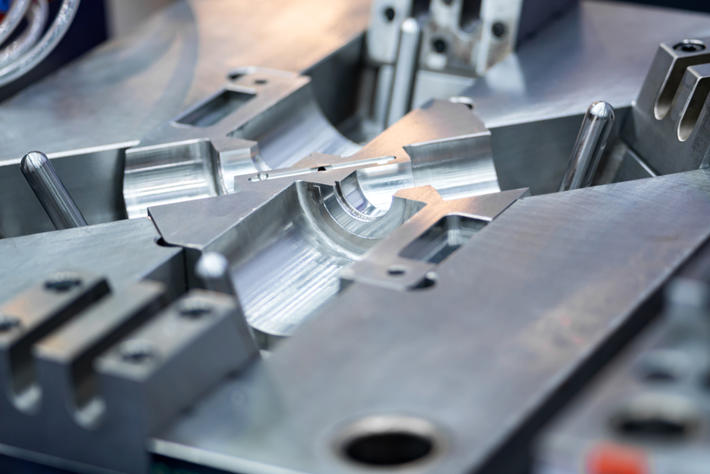Die casting is a manufacturing process that is widely used in the production of metal parts and components for various industries. It involves the use of a die or mold to shape molten metal into a desired form. This process is highly efficient and cost-effective, making it a popular choice for many businesses. In this article, we will provide a comprehensive guide to the die casting process, including its history, types, materials, advantages, and disadvantages.
History of Die Casting
The process of die casting dates back to the mid-1800s when the first patents for the process were granted. However, it wasn\’t until the early 1900s that die casting became a widely used manufacturing process. The first materials to be die-cast were tin and lead alloys, which were used to produce decorative objects, toys, and jewelry. With the development of more advanced alloys and machinery, die casting was soon used to produce a wide range of products, including automotive parts, electronic components, and household appliances.
Types of Die Casting
There are two main types of die casting: hot chamber die casting and cold chamber die casting.
Hot Chamber Die Casting: This type of die casting is used for alloys that have a low melting point, such as zinc, magnesium, and lead. In hot chamber die casting, the metal is melted in a furnace and then transported to the die chamber, which is connected to the furnace. The molten metal is then injected into the die cavity under high pressure, forming the desired part or component.
Cold Chamber Die Casting: This type of die casting is used for alloys that have a high melting point, such as aluminum and copper. In cold chamber die casting, the metal is melted in a separate furnace and then transferred to the cold chamber, which is not connected to the furnace. The molten metal is then injected into the die cavity under high pressure, forming the desired part or component.
Materials Used in Die Casting
Die casting can be used with a wide range of metals and alloys, including:
– Zinc: This is the most commonly used metal for die casting. It is lightweight, durable, and easy to cast.
– Aluminum: This metal is lightweight, strong, and corrosion-resistant, making it ideal for a wide range of applications.
– Magnesium: This metal is lightweight and has a high strength-to-weight ratio, making it ideal for use in automotive and aerospace applications.
– Copper: This metal is highly conductive and has excellent thermal properties, making it ideal for use in electrical and electronic applications.
Advantages of Die Casting
Die casting offers a number of advantages over other manufacturing processes, including:
– High efficiency: Die casting is a highly efficient process that can produce a high volume of parts in a short period of time.
– Cost-effective: Die casting is a cost-effective process that can produce complex parts with high accuracy and consistency.
– High quality: Die casting produces parts with a high level of dimensional accuracy and surface finish.
– Design flexibility: Die casting allows for a wide range of design possibilities, including complex shapes and thin walls.
– Environmental friendliness: Die casting produces minimal waste and can be recycled.

Disadvantages of Die Casting
Despite its many advantages, die casting also has some limitations and disadvantages, including:
– Limited material selection: Die casting is limited to the use of certain metals and alloys.
– High initial cost: The cost of die casting equipment can be high, making it challenging for small businesses to invest in the process.
– Limited size: Die casting is limited to the production of small to medium-sized parts.
– Limited complexity: Although die casting allows for a wide range of design possibilities, it is still limited in terms of the complexity of parts that can be produced.
Conclusion
Die casting is a popular manufacturing process that offers a number of advantages over other processes. It is efficient, cost-effective, and produces high-quality parts with a high level of accuracy and consistency. However, it is not without its limitations and disadvantages, and businesses need to carefully consider the pros and cons of die casting before deciding to invest in the process. With its long history and widespread use, die casting is likely to remain a key manufacturing process for many years to come.
-

- OEM ζάντες από κράμα μαγνησίου χύτευσης υψηλής πίεσης για e-bike
-

- Magnesium Aluminium alloy die casting parts Chain cover for automotive
-

- Ανταλλακτικά UAV χύτευσης με χύτευση thixomoolding από κράμα μαγνησίου C
-

- Ο κατασκευαστής χύτευσης OEM παράγει αυτόματο ταμπλό από κράμα μαγνησίου
-

- Εξαρτήματα χύτευσης OEM για πλαίσιο καθισμάτων αυτοκινήτου
-

- Magnesium alloy die-casting Auto parts headlight frame

 0086-750-5616188
0086-750-5616188 +86 13392089688
+86 13392089688 sales@zhongmei-tech.com
sales@zhongmei-tech.com







